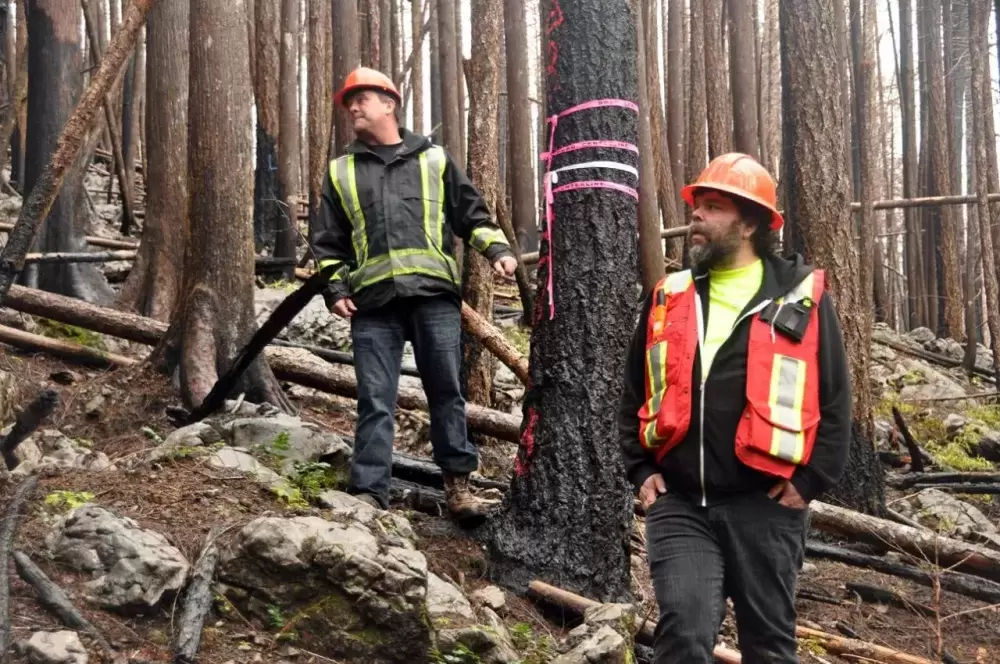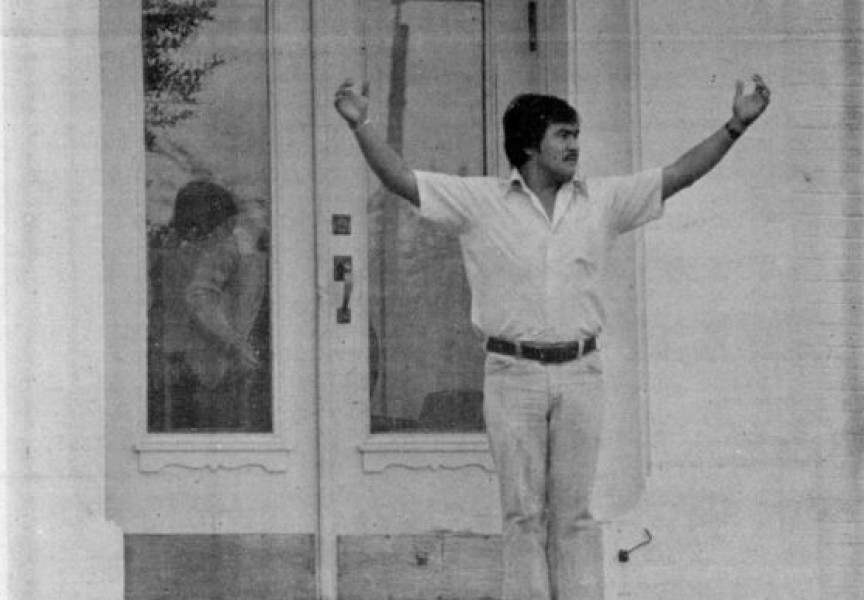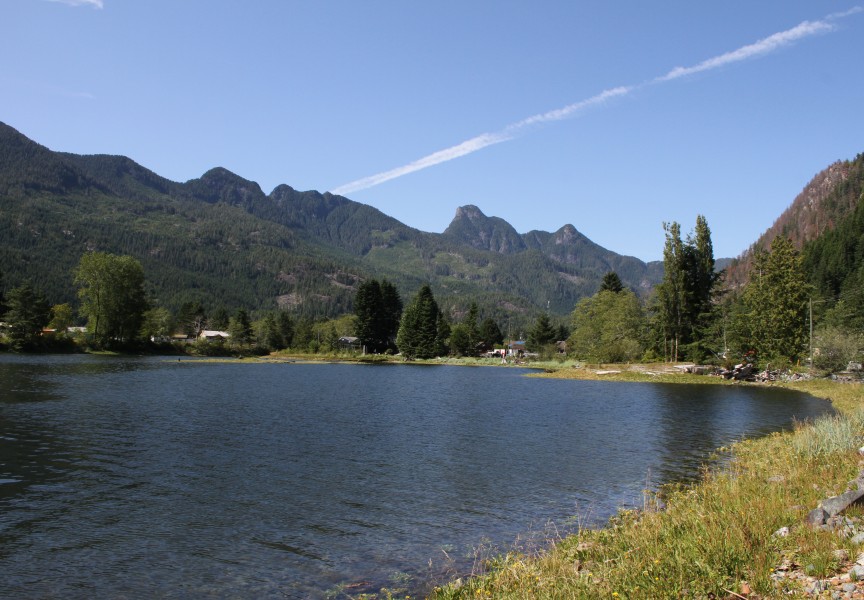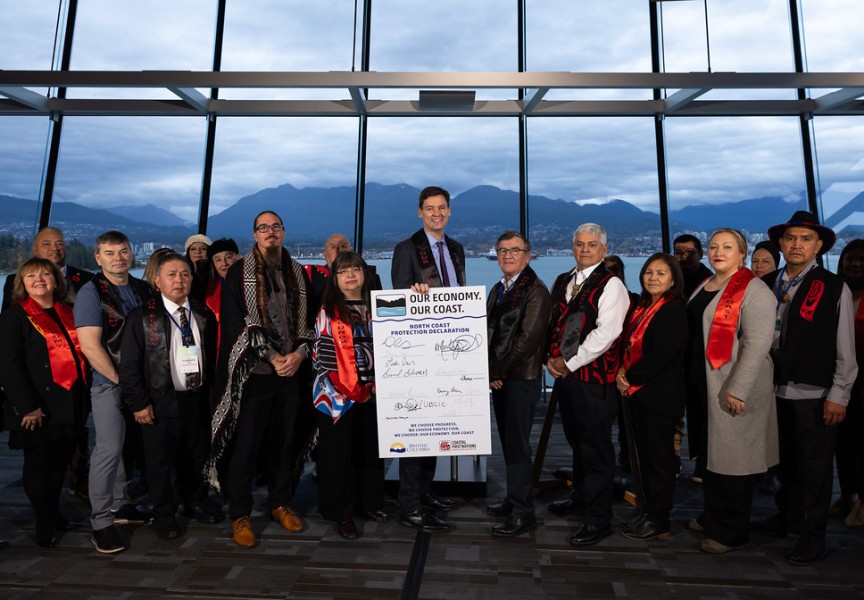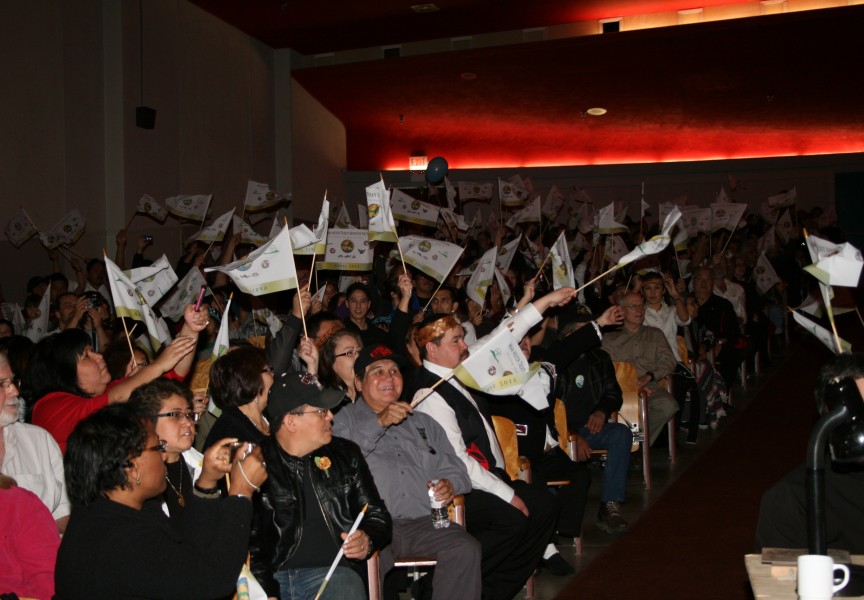The clock is ticking on three blocks of fire-damaged timber on Dog Mountain now approved for salvage by Hupacasath First Nation.
The Dog Mountain Peninsula on Sproat Lake was ravaged by fire in July 2015. Ha-Shilth-Sa toured the site with Hupacasath officials and contractors on Dec. 2.
Hupacasath Chief Councillor Steven Tatoosh said the recovery work is well underway.
“They’re already building roads. It’s all permitted. It’s for roughly 15,000 cubic metres (cm3),” Tatoosh said.
The main access roads used on Friday were only recently completed, using high-grade fill excavated entirely at roadside.
The salvage project actually stems from an accommodation agreement Hupacasath had been negotiating with the Crown prior to the fire, Tatoosh explained.
“There was a salvage component in there. And it just happened that Dog Mountain caught fire the year before we signed the agreement,” he said. Coincidentally, the agreement was for just over 15,000 cm3.
“That agreement was over a seven-year period. But now, we are going to do it in one year, as a result of Dog Mountain.”
Tatoosh said the speeded up schedule is necessary, because if it sits over another winter, most of the damaged timber would be rendered unfit for commercial milling as a result of bark beetle infestation.
“There would have been no value left in the standing wood. We just made the window on the bark beetles.”
The first insects to attack the damaged timber were Ambrosia beetles. These beetles bore into the living tissue below the trunk, called cambium. They do not eat the wood. They carry a fungus that sets up a fermentation process, turning out a sugar-like ooze (the ambrosia) that the beetles feast on.
Affected trees are covered with pinholes that eventually produce white blotches on the bark.
Tatoosh said the salvage was put up for bid, and a local company, Probyn Logging, won the contract.
“We try to get the best value, and to shop locally,” Tatoosh noted.
In turn, Probyn will sell the salvaged logs to the highest bidder.
“We may use our mill to mill some wood up. We have had a lot of community requests for ‘miscellaneous’ lumber,” he added.
Forester Len Apedaile of Econ Consulting has worked with Hupacasath since 2000, when Hupacasath received its first forest tenure: Woodlot 1902 in Port Alberni. Since then, the nation has added Woodlot 1476 at Sproat Lake and a First Nations Woodland License at Great Central Lake.
Apedaile said the original salvage license application was to harvest dead and damaged timber, plus post-harvest materials (mainly shake- and shingle-blocks) in the Sproat Lake, Coos Bay and Nahmint Lake region.
“Through that process we identified this opportunity to get in and do something on Dog Mountain. That discussion started very soon after the fire,” said Apedaile.
The approval process involved a number of provincial agencies, he explained. Once issued, that license had to be activated within a Forest Stewardship Plan, because the Sproat Lake area falls outside existing Hupacasath forest tenure.
“These landscape areas are actually part of B.C. Timber Sales’ charted area,” he explained. But while BCTS holds the tenure for live timber, the province can issue independent licenses, such as the Hupacasath salvage agreement, to operate on the same landscape.
“So our first step was to amend the Forest Stewardship Plan. That involves First Nations Referral/Consultation and public consultation as well. That occurred this summer and fall.”
Hupacasath then had to apply for a cutting permit and a road-building permit. Those also required consultation and referral. Apedaile gave high marks to Chief Councillor Tatoosh for his successful effort to push through the various approval processes in parallel.
“Dog Mountain really changed the scope [of the salvage mandate] and created an additional opportunity,” Apedaile said. “As you can see, [now] there is a significant volume of timber that is dead all at once – and salvageable. Therefore, this particular license was an ideal tool to be able to apply to this site.”
Apedaile noted that in the original license, there were allocations of 7,500 cm3 of dead and damaged timber and 10,000 cm3 of post-harvest material. But a timber survey conducted after the fire identified 15,000 cm3 of dead and damaged timber that was subject to rapid deterioration. That required an adjustment to the allocation, which was accomplished reasonably quickly.
Up on the hillside, trees stand scorched from ground level to as high as five or six metres up the trunks. At ground level, there are the burnt remains of forest undergrowth, which served as “ladder fuel” when the blaze passed through.
Apedaile explained that the Dog Mountain fire was a ground-level fire, as opposed to a “crown fire,” spreading along the tops of the trees. The province actually set a “back burn” on one end of the peninsula to prevent the main fire from consuming the entire forest.
“It really consumed the forest floor – the woody debris and all of the branches and fallen trees and stumps – all of that type of stuff which is on the forest floor.”
That included much of the organic layer of the soil, known as the “duff layer,” he explained.
The vast majority of cedars and hemlock were killed outright, along with deciduous species like alder and maple. For most, the intense heat at ground level simply cooked their root systems. Others survived with partially-scorched trunks, but succumbed during the drought of summer 2016.
Young Douglas firs were also killed, but older trees survived.
“Douglas fir, which is a ‘Fire Ecosystem’ tree, tends to have thick bark, as a mechanism to protect it from fire. It also tends to be quite deep-rooted,” Apedaile said.
In Douglas fir forests, fire is a natural part of the maintenance system, he explained, and, at first glance, the burned-off forest appears tidy and neatly spaced – except for the scorching and the dead standing timber.
Apedaile added that the burned-off deciduous trees (especially alder) provide much-needed nutrients to the soil, such as nitrogen and potassium.
“This is one of the recovery systems of the ecosystem, is that there is this boost of fertilizers in the soil that help the next generation pop up and recover, vegetation-wise.
“We tend to be nitrogen-deficient in our forests here, because of our high rainfall and our typically acidic soil.”
A closer look at the ground level reveals tiny Douglas fir seedlings, sprouted this spring, popping up through the soil, along with patches of (now-dead) fireweed that naturally follow a forest fire.
Spotted here and there are scorched stumps of swordfern. They have yet to reappear, but the hillside is already covered with faster-growing bracken fern.
On first arrival at the site, watching the damaged trees waving unsteadily in the breeze, Ray Bartram of Ryka Industries issued a caution.
“If it gets windy, we’re getting out of here,” he warned. Bartram set up the road-building effort, which required the felling of about 1,000 cm3 of merchantable timber. The scorched trunks are stacked neatly by the roadside.
“I did the right-of way with a feller-processor. I had the window of opportunity to keep him for a few days, so we did some widening here and up above so we could put some wood at roadside,” Bartram said. “The feller-buncher will be coming next week. The road-builders will be done, and the buncher will start next week. The week after that, the hoe-chucker will be here, and then the processor will come in and make some more logs.”
During the operation, self-loading trucks will be hauling away the merchantable logs. Scorched logs cannot be used for making pulp, because the charcoal ruins the bleaching process. Beetle-infested logs cannot be exported.
Some of the old deactivated roads have been re-activated, which required replacing culverts. Bartram said once the salvage operation is complete, culverts on both the re-activated and new roads will be removed once again.
Sproat Lake regional director Penny Cote accompanied the Hupacasath delegation to learn how the project would affect her community, which includes permanent and summer residents.
During the tour, Cote focused on both visual and safety concerns expressed by her constituents, many of whom had a direct line-of-sight to the fire in progress. Part of the participation is simply being good neighbors, she said.
“We [regional district] are mandated to consult First Nations on any development that affects their traditional territories. We see this as being respectful,” Cote said.

